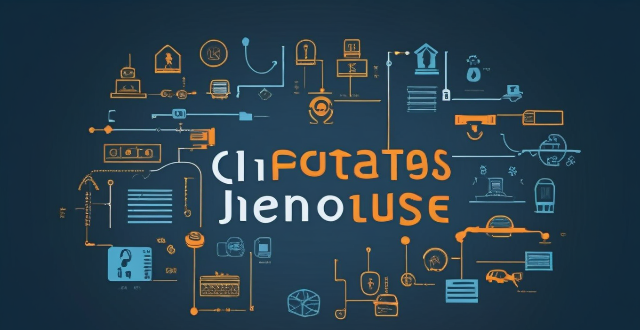The text discusses the latest trends in smart home technology for 2023, including voice control and AI assistants, energy efficiency and sustainability, security and privacy, integration with other technologies, and personalization and customization.

Latest Trends in Smart Home Technology for 2023
As we enter the year 2023, the world of smart home technology continues to evolve at a rapid pace. With advancements in artificial intelligence (AI), internet of things (IoT), and cloud computing, smart homes are becoming more intelligent, efficient, and user-friendly than ever before. In this article, we will explore some of the latest trends in smart home technology that are set to shape the industry in 2023.
1. Voice Control and AI Assistants
One of the most significant trends in smart home technology is the increasing popularity of voice control and AI assistants. Devices like Amazon Echo, Google Home, and Apple HomePod have become household names, allowing users to control their smart homes using simple voice commands. In 2023, we can expect even more advanced AI assistants that can understand complex commands, respond to multiple requests simultaneously, and learn from user behavior over time.
2. Energy Efficiency and Sustainability
As concerns about climate change and energy consumption continue to grow, smart home technology is becoming more focused on energy efficiency and sustainability. Smart thermostats like Nest and Ecobee have already made significant strides in this area, but in 2023 we can expect even more advanced systems that use machine learning algorithms to optimize energy usage based on user preferences and weather conditions. Additionally, solar-powered smart home devices and battery storage solutions are likely to gain popularity as homeowners look for ways to reduce their carbon footprint.
3. Security and Privacy
Security and privacy remain top concerns for smart home users, and manufacturers are responding by incorporating more robust security features into their products. In 2023, we can expect to see increased use of end-to-end encryption, two-factor authentication, and biometric authentication methods like facial recognition and fingerprint scanning. Moreover, smart home devices are likely to become more transparent about data collection practices, giving users greater control over their personal information.
4. Integration with Other Technologies
The trend towards greater integration between smart home technology and other devices and platforms is set to continue in 2023. For example, smart home systems are increasingly being integrated with wearable devices like fitness trackers and smartwatches, allowing users to monitor their health metrics while they go about their daily routines at home. Similarly, integration with autonomous vehicles could enable smart homes to automatically adjust lighting and temperature settings when a car approaches the driveway.
5. Personalization and Customization
Finally, smart home technology is becoming more personalized and customizable than ever before. With the help of AI algorithms and machine learning, smart home systems can now learn from user behavior and adapt to their preferences over time. This means that users can enjoy a truly customized experience that caters to their unique needs and preferences. For example, a smart lighting system might automatically adjust its brightness levels based on the time of day or the user's mood, while a smart speaker might play different types of music based on the user's activity level or location within the home.
In conclusion, these are just a few of the latest trends in smart home technology that are set to shape the industry in 2023. As these technologies continue to evolve and improve, we can expect even more exciting developments in the years ahead.